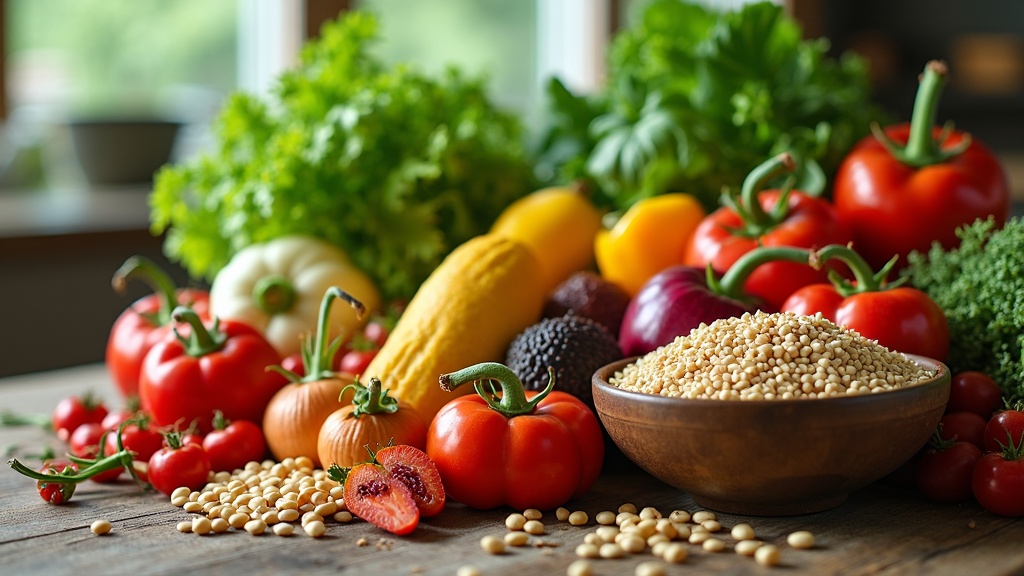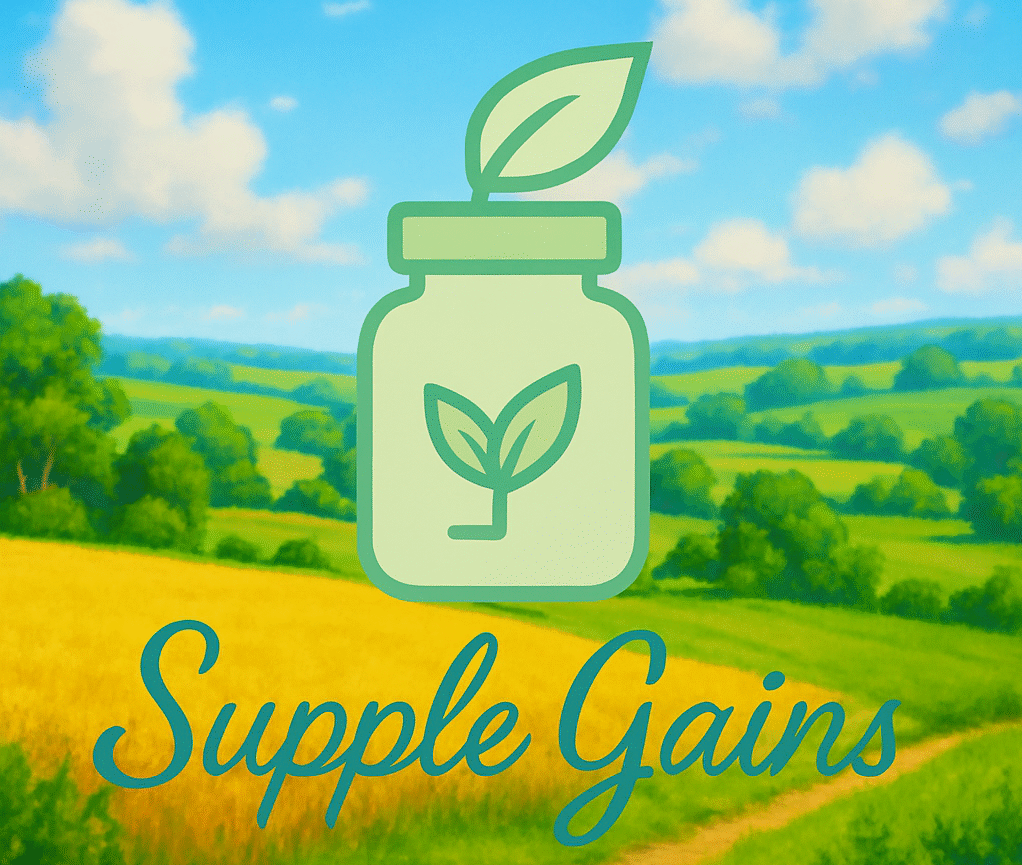Switching to a plantbased diet isn’t just a food trend. It’s also one of the straightforward ways I’ve found to cut down my own carbon footprint.
Choosing more plants and fewer animal products makes a big impact on the planet, even if that starts with something as simple as having oat milk in your morning coffee or planning a veggie dinner a few nights a week.
I’m going to break down how plantbased diets help shrink your carbon footprint, what this actually means for the environment, and how you can start making more climatefriendly choices without overhauling your entire life.

Why Switching to PlantBased Diets Reduces Carbon Emissions
Eating plantbased goes way beyond the salad bar.
The production of meat, especially beef and lamb, uses a lot more resources than growing vegetables, grains, and legumes.
This includes everything from the land and water to the amount of greenhouse gas released while raising livestock.
One of the main reasons animal agriculture comes with a high carbon price tag is the methane cows and sheep emit as part of their digestive process.
There’s also carbon dioxide from farm equipment and deforestation, and nitrous oxide from fertilizing feed crops.
Collectively, these gases pack a powerful global warming punch.
According to data from worldresourceinstitute.org, beef can have up to 8-10 times the emissions of plantbased protein sources like beans per gram of protein.
That’s a pretty steep difference just based on what ends up on your plate.
Switching to plantbased foods trims these emissions. Opting for lentil stew over a steak, for example, means choosing food that took less energy to grow, didn’t produce as much methane, and often used less land or water.
When millions of people make these choices, it matches up to big carbon savings globally.
Plus, as demand for plantbased foods continues to grow, more sustainable farming practices can spread fast, making the food system even greener.
Understanding the Big Environmental Benefits
Aside from lowering greenhouse gases, going plantbased brings other environmental perks. Plantfocused diets help:
- Reduce water use: Growing plants like pulses, veggies, and grains uses less water than raising animals, especially cattle.
- Save space: Crops for direct human consumption take up less space than crops grown just to feed livestock. Switching some land from feed crops back to forests or nature helps soak up more carbon from the air.
- Lower pollution: Largescale animal farming can mean more runoff and pollution in rivers and lakes. Growing beans or wheat usually creates less waste overall.
Trying out plantbased living has ripple effects for everything from local waterways to global weather patterns.
Studies such as those in Nature link plantforward diets to less stress on the planet’s natural resources, which is a pretty solid reason to start looking at your shopping cart differently.
First Steps to Eating More PlantBased
Switching your eating habits doesn’t have to be all or nothing. I started by tweaking a few meals a week and found it was a lot more doable than a full overnight switch.
Here are a few things that helped me get rolling:
- Pick familiar favorites: Think chili, tacos, stirfry, or pasta—all of these have plantbased versions that are just as satisfying.
- Swap the protein: Use beans, lentils, or tofu in recipes that usually call for meat. This not only lowers emissions but saves money too.
- Load up on veggies and grains: Make grains like quinoa, rice, or barley the base of your meals, then pile on veggies and sauce for a filling combo.
Eating this way never feels like a punishment.
It’s pretty tasty and feels good once you notice lighter grocery bills and maybe even a lighter carbon footprint.
Adding a few plantbased cookbooks or following food blogs can help spark new ideas.
There are so many unique plantbased recipes now that it’s nearly impossible to get bored with the options.
What to Consider Before Going PlantBased
Making diet changes comes with a few challenges. Here are a couple of things I found useful to keep in mind:
- Nutrition: Some nutrients, like vitamin B12, iron, or omega3s, are less common in plant foods. It’s worth checking with a nutritionist or using reliable sources like EatRight for tips on balancing things out. Supplements or fortified foods may help cover any gaps, especially when you’re just starting out.
- Meal planning: Planning meals in advance helps avoid the “I don’t know what to cook” rut. Batch cooking and using leftovers can save time, too.
- Social situations: If you’re eating out or heading to a friend’s place, looking up menus or bringing a favorite dish means you don’t get stuck with salad as your only option.
With a bit of creativity and planning, most of these speed bumps get easier as you build up your recipe toolkit and get a sense of what you really enjoy eating.
Try exploring online communities focused on plantbased eating for tips, support, and inspiration.
Connecting with others who are on the same path can make the switch more fun.
Nutrition Tips
Switching over to mostly plants made me pay more attention to getting enough protein and nutrients.
Adding fortified plant milks, nuts, seeds, tofu, and whole grains helped me keep meals balanced.
If you’re at all unsure, regular checkins with a dietitian come in handy just to make sure everything’s on track.
Another trick is to include a wide variety of colors and types of produce; this helps provide a broad mix of vitamins and minerals.
Convenience Foods: Yay or Nay?
There are loads of readymade plantbased burgers, nuggets, and cheeses in stores now. Convenient? Sure.
But these are often more processed and pricier than cooking whole foods.
I like to keep these as an occasional treat and stick with simple ingredients most of the time for that smaller environmental impact, and a happier wallet.
When picking out convenience foods, check the ingredient lists and try to choose products with more natural ingredients.
Even with a busy schedule, prepping extra veggies or grains in advance can make it easier to skip packaged meals.
Local and Seasonal Options
Another tip that made a difference for me: buying local, inseason produce.
Local food doesn’t travel as far, which means fewer emissions from transport.
Plus, it usually tastes better and supports local farmers.
Community supported agriculture (CSA) boxes are a fun way to try new veggies while keeping things ecofriendly.
Shopping at local farmers markets or participating in produce swaps with neighbors also supports your community and introduces you to new varieties of fruits and vegetables you might not find at large supermarkets.
Practical Environmental Benefits of PlantBased Diets
- Lower Food Miles: Plantbased diets allow more flexibility to choose local produce, which often goes hand in hand with less travel and lower fuel costs for shipping.
- Saves Wildlife: Less land and fewer pesticides used for crops means more room for wildlife habitats to survive and flourish.
- Reduces Waste: Meat and dairy spoil faster and need more packaging. Plant foods like grains and legumes store better and often use less packaging, helping trim food and plastic waste.
Try making small switches, like using chickpeas in your curry or blending greens into your soups.
Tiny changes do add up and make a big difference over time for both you and the planet.
Raising your own herbs, or sprouting seeds at home, also cuts down packaging waste and reduces your carbon footprint even more.
Advanced Tips for Sustainable Eating
Once you’re comfortable with the basics, there are a few ways to up your game:
- Batch cook and freeze: Prepping meals in advance cuts down on impulse takeout orders and helps use up veggies before they spoil.
- Grow your own: Even a tiny container garden of herbs or salad greens can supplement storebought produce and lower your food’s footprint. This also gives you fresher ingredients right at home.
- Explore diverse cuisines: Trying plantbased recipes from other cultures keeps meals fun and tasty, and can introduce you to new flavors and cooking styles that don’t rely on animal products. Popular world cuisines often have delicious plantbased staples that are easy to follow.
The key is to make it a part of your lifestyle, not just a shortterm project.
Over time, habits stick and the rewards for the environment and your health are noticeable.
Staying curious about new recipes, rotating your vegetables, and sharing meals with family and friends can all add enjoyment to the switch.
PlantBased Diets in Real Life
I’ve found it helpful to look at realworld examples.
Families who’ve made simple changes, like plantbased breakfasts or “Meatless Mondays,” often see grocery savings and more variety in their meals.
College students living on tight budgets find lentil soup or veggie pasta more affordable than many meatcentric meals.
- Office lunches: Bringing grain bowls or simple veggie wraps is quicker and sometimes more filling than processed or fast food.
- Special occasions: Hosting dinners with hearty beanbased chili or veggie lasagna gets lots of compliments and guests often don’t miss the meat at all.
Stories from The Vegan Society show that the environmental impacts can be measured by families over a year.
This means savings in carbon, water, and even food costs are real and can make a year’s worth of difference.
Common Questions on PlantBased Diets and Carbon Footprint
Here are a few questions I get from people curious about plantbased living for the environment:
Question: Is going plantbased really the most effective way to shrink my carbon footprint?
Answer:
Diet changes are one of the biggest levers individuals have for reducing carbon emissions, right alongside transportation and energy choices.
A widespread switch to plantbased eating would significantly cut global emissions, according to Our World in Data.
Question: Can I make a difference if I only go plantbased parttime?
Answer:
Absolutely. Even a few plantbased meals a week adds up.
You don’t have to go 100% vegan to help the planet; every swap matters.
Over the course of a year, these changes can have a measurable effect on your personal environmental footprint.
Question: Aren’t some plant foods, like almonds or avocados, bad for the environment too?
Answer:
Some plant foods do have higher environmental impacts, especially when grown in waterstressed regions.
Variety is key, so mix crops, buy local or fairtrade if possible, and don’t worry if not every single ingredient is perfectly sourced.
Being aware of where your food comes from, and switching up the types you buy, can help tone down the impact.
Final Thoughts
Shifting to a plantbased diet is a simple and powerful way to shrink your carbon footprint while still enjoying food.
By making small, smart swaps, meal after meal, anyone can contribute to a healthier planet for everyone.
Every forkful counts toward cleaner air, more water saved, and a climatefriendlier lifestyle.
With each little choice, you help shape a future that’s better for people, animals, and the earth alike.
